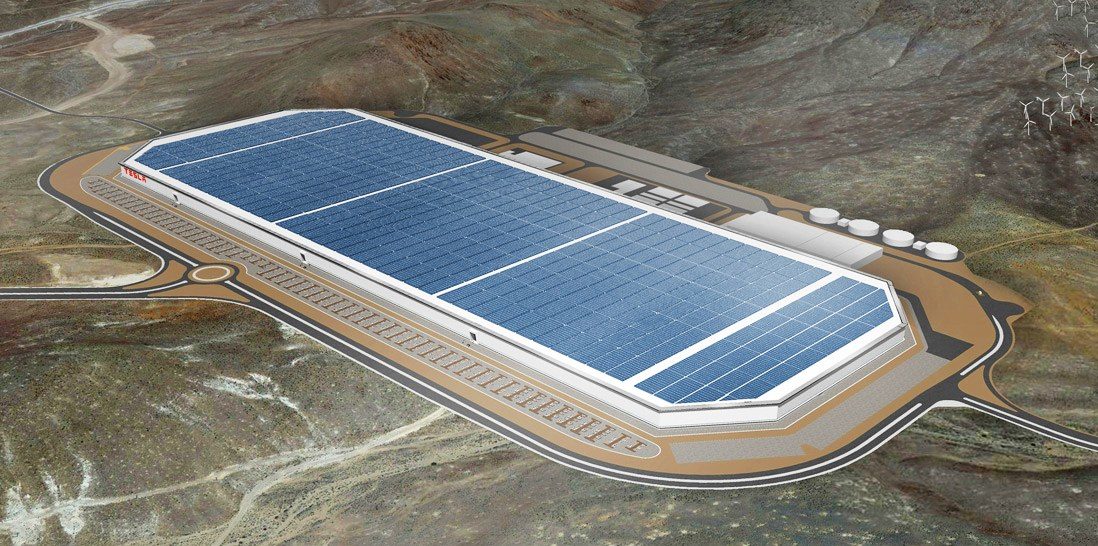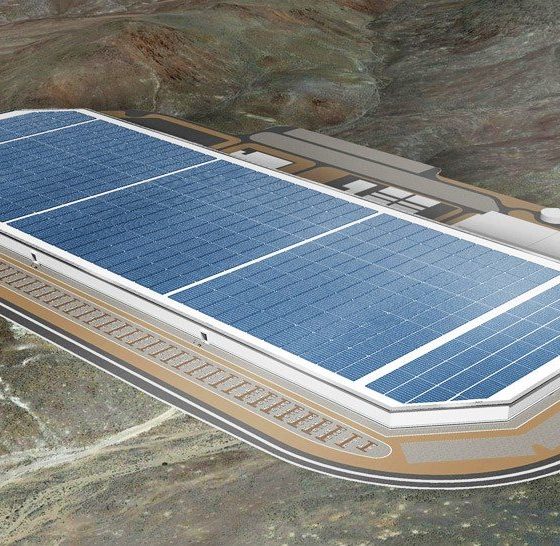

Investor's Corner
Tesla’s ‘leading choice’ for its Europe Gigafactory site is Germany
In a series of tweets on Monday, Elon Musk casually stated that Tesla’s “leading choice” for the site of its Europe Gigafactory is Germany. According to Musk, the facility would probably be built somewhere on the German-French border, near the Benelux (Belgium, Netherlands, Luxembourg) countries.
Germany is a leading choice for Europe. Perhaps on the German-French border makes sense, near the Benelux countries
— Elon Musk (@elonmusk) June 19, 2018
A Gigafactory in Europe has been in Musk’s radar for some time now. References to the facility being built in the region were teased by Musk back in late 2016, after the company announced its acquisition of Grohmann Engineering. Grohmann Engineering, now known as Tesla Grohmann Automation, is based in Prüm, Germany, which makes it strategically located for any facility that Tesla builds near the German-French border. With the robotics company nearby, Tesla would be able to scale the manufacturing capabilities of its Europe Gigafactory with relative ease.
Several areas in Germany close to the Benelux countries actually have thriving car industries. Baden-Württemberg, for one, is home to facilities owned by legacy automakers such as AMG, Mercedes-Benz, Porsche, and Audi. Apart from being the third-largest state in Germany, Baden-Württemberg is also one of the regions in the country with the highest density of electric cars and EV charging infrastructure. Baden-Württemberg is also home to a good number of academic institutions, which could provide Tesla with a sizeable pool of potential employees.
Overall, the prospect of the Europe Gigafactory being set up in Germany stands to benefit Tesla’s customers and other facilities in the region. With the Europe Gigafactory producing battery packs, powertrains, and vehicles, Tesla’s other facilities in the area, such as its Tilburg, Netherlands assembly plant, could increase its capability to roll out electric vehicles.
Ultimately, however, a Gigafactory in Europe would be Tesla’s ticket to saturating the region with competitively-priced vehicles such as the Model 3, and possibly even the Model Y. During Tesla’s Q1 2018 earnings call, Elon Musk noted that all future Gigafactories would be incorporating vehicle production. With its first foray into the mid-sized luxury segment — the Model 3 — already proving to be a formidable competitor in its class in the United States, an aggressive push of the vehicle in Europe could very well put a sizeable dent in the profits of the region’s legacy automakers.
Tesla’s Europe Gigafactory would likely take some time before its construction begins, however. For now, Tesla is focused on establishing the China Gigafactory. The upcoming factory, which will be wholly owned by Tesla thanks to changes in China’s rules for facilities owned by foreign automakers, is expected to be the site where the majority of the Model Y crossover SUV would be produced. Details about the upcoming all-electric crossover SUV have been dropped by Musk during the past few earnings call as well. Back in Q3 2017, Musk asserted that its China facility would not produce the Model S and Model X, but rather, the Model Y and Model 3. During the Q4 2017 call, Musk stated that Tesla would begin investing in the Model Y sometime later in 2018.

Investor's Corner
Tesla stock closes at all-time high on heels of Robotaxi progress

Tesla stock (NASDAQ: TSLA) closed at an all-time high on Tuesday, jumping over 3 percent during the day and finishing at $489.88.
The price beats the previous record close, which was $479.86.
Shares have had a crazy year, dipping more than 40 percent from the start of the year. The stock then started to recover once again around late April, when its price started to climb back up from the low $200 level.
This week, Tesla started to climb toward its highest levels ever, as it was revealed on Sunday that the company was testing driverless Robotaxis in Austin. The spike in value pushed the company’s valuation to $1.63 trillion.
Tesla Robotaxi goes driverless as Musk confirms Safety Monitor removal testing
It is the seventh-most valuable company on the market currently, trailing Nvidia, Apple, Alphabet (Google), Microsoft, Amazon, and Meta.
Shares closed up $14.57 today, up over 3 percent.
The stock has gone through a lot this year, as previously mentioned. Shares tumbled in Q1 due to CEO Elon Musk’s involvement with the Department of Government Efficiency (DOGE), which pulled his attention away from his companies and left a major overhang on their valuations.
However, things started to rebound halfway through the year, and as the government started to phase out the $7,500 tax credit, demand spiked as consumers tried to take advantage of it.
Q3 deliveries were the highest in company history, and Tesla responded to the loss of the tax credit with the launch of the Model 3 and Model Y Standard.
Additionally, analysts have announced high expectations this week for the company on Wall Street as Robotaxi continues to be the focus. With autonomy within Tesla’s sights, things are moving in the direction of Robotaxi being a major catalyst for growth on the Street in the coming year.
Elon Musk
Tesla needs to come through on this one Robotaxi metric, analyst says
“We think the key focus from here will be how fast Tesla can scale driverless operations (including if Tesla’s approach to software/hardware allows it to scale significantly faster than competitors, as the company has argued), and on profitability.”

Tesla needs to come through on this one Robotaxi metric, Mark Delaney of Goldman Sachs says.
Tesla is in the process of rolling out its Robotaxi platform to areas outside of Austin and the California Bay Area. It has plans to launch in five additional cities, including Houston, Dallas, Miami, Las Vegas, and Phoenix.
However, the company’s expansion is not what the focus needs to be, according to Delaney. It’s the speed of deployment.
The analyst said:
“We think the key focus from here will be how fast Tesla can scale driverless operations (including if Tesla’s approach to software/hardware allows it to scale significantly faster than competitors, as the company has argued), and on profitability.”
Profitability will come as the Robotaxi fleet expands. Making that money will be dependent on when Tesla can initiate rides in more areas, giving more customers access to the program.
There are some additional things that the company needs to make happen ahead of the major Robotaxi expansion, one of those things is launching driverless rides in Austin, the first city in which it launched the program.
This week, Tesla started testing driverless Robotaxi rides in Austin, as two different Model Y units were spotted with no occupants, a huge step in the company’s plans for the ride-sharing platform.
Tesla Robotaxi goes driverless as Musk confirms Safety Monitor removal testing
CEO Elon Musk has been hoping to remove Safety Monitors from Robotaxis in Austin for several months, first mentioning the plan to have them out by the end of 2025 in September. He confirmed on Sunday that Tesla had officially removed vehicle occupants and started testing truly unsupervised rides.
Although Safety Monitors in Austin have been sitting in the passenger’s seat, they have still had the ability to override things in case of an emergency. After all, the ultimate goal was safety and avoiding any accidents or injuries.
Goldman Sachs reiterated its ‘Neutral’ rating and its $400 price target. Delaney said, “Tesla is making progress with its autonomous technology,” and recent developments make it evident that this is true.
Investor's Corner
Tesla gets bold Robotaxi prediction from Wall Street firm
Last week, Andrew Percoco took over Tesla analysis for Morgan Stanley from Adam Jonas, who covered the stock for years. Percoco seems to be less optimistic and bullish on Tesla shares, while still being fair and balanced in his analysis.

Tesla (NASDAQ: TSLA) received a bold Robotaxi prediction from Morgan Stanley, which anticipates a dramatic increase in the size of the company’s autonomous ride-hailing suite in the coming years.
Last week, Andrew Percoco took over Tesla analysis for Morgan Stanley from Adam Jonas, who covered the stock for years. Percoco seems to be less optimistic and bullish on Tesla shares, while still being fair and balanced in his analysis.
Percoco dug into the Robotaxi fleet and its expansion in the coming years in his latest note, released on Tuesday. The firm expects Tesla to increase the Robotaxi fleet size to 1,000 vehicles in 2026. However, that’s small-scale compared to what they expect from Tesla in a decade.
Tesla expands Robotaxi app access once again, this time on a global scale
By 2035, Morgan Stanley believes there will be one million Robotaxis on the road across multiple cities, a major jump and a considerable fleet size. We assume this means the fleet of vehicles Tesla will operate internally, and not including passenger-owned vehicles that could be added through software updates.
He also listed three specific catalysts that investors should pay attention to, as these will represent the company being on track to achieve its Robotaxi dreams:
- Opening Robotaxi to the public without a Safety Monitor. Timing is unclear, but it appears that Tesla is getting closer by the day.
- Improvement in safety metrics without the Safety Monitor. Tesla’s ability to improve its safety metrics as it scales miles driven without the Safety Monitor is imperative as it looks to scale in new states and cities in 2026.
- Cybercab start of production, targeted for April 2026. Tesla’s Cybercab is a purpose-built vehicle (no steering wheel or pedals, only two seats) that is expected to be produced through its state-of-the-art unboxed manufacturing process, offering further cost reductions and thus accelerating adoption over time.
Robotaxi stands to be one of Tesla’s most significant revenue contributors, especially as the company plans to continue expanding its ride-hailing service across the world in the coming years.
Its current deployment strategy is controlled and conservative to avoid any drastic and potentially program-ruining incidents.
So far, the program, which is active in Austin and the California Bay Area, has been widely successful.








